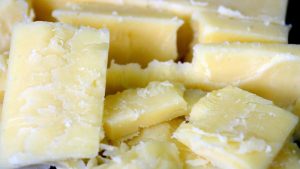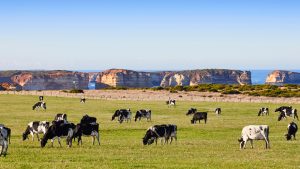
The ministry made the remarks after Farrell and Chinese Minister of Commerce Wang Wentao held a meeting via video link on Monday. This was the first interaction between the two countries’ trade ministers since 2019.
Shu Jueting, a ministry spokeswoman, said the two sides discussed trade and investment issues and exchanged views on the further expansion of cooperation in emerging areas.
The two ministers instructed their working teams to follow up on matters identified during the talks and to communicate specifically on the arrangements for relevant economic and trade exchange mechanisms, said Shu, adding that the meeting marks an important step for the two countries to get bilateral economic and trade relations back on track.
Shu reiterated that it is normal for both sides to have some mutual concerns in the area of trade, since the size of China-Australia trade now exceeds $220 billion.
“China has repeatedly stressed that the inspection and quarantine and trade remedy measures taken by its government units strictly comply with Chinese laws and regulations, and the World Trade Organization rules, and it is inappropriate to misinterpret them as restrictive measures,” she said.
“China is willing to communicate on some technical issues of mutual concern in bilateral trade to find mutually beneficial or win-win solutions,” she said, adding China hopes that the Australian side will move in the same direction as the Chinese side to provide a fair, open and nondiscriminatory business environment for Chinese companies to invest, and promote high-quality development of bilateral economic and trade cooperation.
China-Australia trade declined by 3.9 percent to $220.92 billion in 2022, data from China’s General Administration of Customs showed.
Australia mainly exports iron ore, coal, alumina, copper ore, wool, wine, timber, grains, fruits and aquatic and dairy products to China.
China mainly ships computers, transport equipment, mechanical and electrical products, electric vehicles and chemical products to Australia.
“China’s economic reforms and consumption upgrade will prove beneficial to many Australian companies. There is strong potential for more deals in various industries, particularly in mining, healthcare, vocational education, innovation, high-end consumer and agricultural products,” said Wang Xueling, a researcher specializing in regional economic development at the University of International Business and Economics in Beijing.
China’s rapid economic expansion and its growing number of affluent consumers have demonstrated that the country is still an attractive investment destination and a strategic market for global and Australian businesses, said Natalie Lowe, CEO and founding partner of The Orangeblowfish, a creative agency with teams across China, Australia, North America and the United Kingdom.
As an Australian who has been living in China for over 15 years, Lowe said the largest growth in China may come from optimizing branded spaces, especially in retail, workspace and hospitality industries. The offline brand experience in China has moved well beyond digital and e-commerce models in the West.
Tian Yongzhong, vice-president of State-owned Aluminum Corporation of China, said China and Australia have a strong foundation for industrial cooperation as the latter is rich in nonferrous metal resources and has a complete industrial chain in the field, while China ranks first in the world in terms of the scale of the nonferrous metals industry, and boasts internationally leading technologies and equipment in the field.
“China and Australia have similarities in industries and share same decarbonization objectives. Win-win cooperation certainly is the historical trend,” Tian said.
![The Chinese and Australian national flags in Sydney, Australia. [Photo/Xinhua]](https://en.edairynews.com/wp-content/uploads/2023/02/Australia-ministers-visit-to-put-trade-back-on-track.jpeg)
























